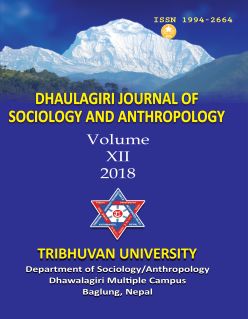Addressing Linguistic Diversity with Three Language Formula: A Case Study of Newa Schools in Newa Settlements
DOI:
https://doi.org/10.3126/dsaj.v12i0.22183Keywords:
Linguistic diversity, code switching, medium of instruction, language policy, NepalbhasaAbstract
Nepal, as a multilingual nation, has constitutionally adopted mother tongue based multilingual education (MTB-MLE) policy in 1990. However, implementation of this policy into practice has been taking considerably a long time. This study, primarily focused on Newa Schools in Newa Settlement Campaign (NSNSC), looks into the efforts made by Nepalbhasa communities to implement the MTB-M LE policy by adopting a practical strategy of three language formula to facilitate students’ learning through mother tongue, official language Nepali and international language English, thus, addressing the demands of socially and culturally diverse parents as well. This study has been carried out with ethnographic methods including participant observation, interviews, electronic recording, taking notes while recording and also using local language as suggested by Duranti (2000, pp.99-118 ). The data have shown that as a new experiment the three language formula has been a success story and a raiser of hope for future endeavors to implement MTB-MLE policy in the context of Nepal’s linguistic diversity. What is still required is to chart a ‘plan of action’ supported by ‘political will’ of the government (central as well as local) and an active support of respective linguistic communities.




